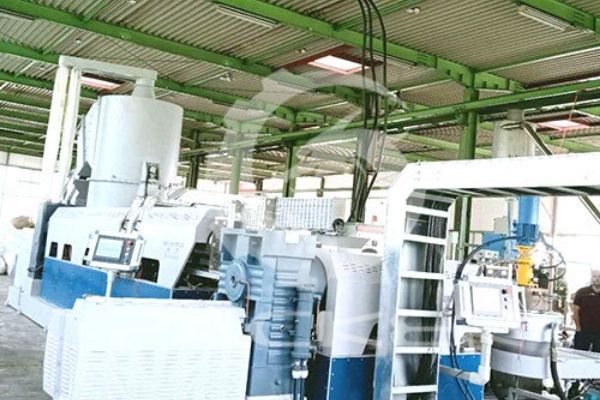With the development of society and the continuous improvement of living standards, there are more and more waste products, and the plastic pellet machine plays a vital role. Its primary function is to recycle old plastics and process pellets.
The granulator adopts a unique screw design and configuration, which is suitable for the regeneration and colour mixing granulation of PP, PE, PS, ABS, PVC, PC, POM, EVA, LCP, PET, PMMA and other plastics.
Features of plastic granulator:
1. The reducer of the granulator adopts a high torque design and high precision gear processing to achieve noise-free and stable operation.
2. The screw and barrel have undergone special hardening treatment, which has wear resistance characteristics, good mixing performance, and high output. The vacuum exhaust or standard exhaust port design can discharge water and exhaust gas during the production process, making the material more stable; the rubber particles are more robust, ensuring the excellent quality of the product.
3. The bearing adopts imported parts; the plastic granulator is reasonably oil-immersed lubrication combined with the mandatory lubrication device for essential functions and the interlocking protection device to ensure the reliable and stable operation of the host.
Principle of plastic granulator
The principle of the plastic granulator adopts the computer-aided design of the threaded element for the meshing conjugate type. It has an excellent self-cleaning function and good interchangeability. The specifications of the plastic pellet machine include conveying block, mixing block, kneading block, countercurrent block and toothed disk, etc.; through appropriate and reasonable combination, the plastic pellet machine can achieve material Conveying, plasticizing, shearing, dispersing, homogenizing, exhausting, compacting, etc., to realize the technological process of polymer materials.

Five significant structures and technical parameters of the plastic granulator
1. Main body: The main body is an independent rectangular cylinder. Its upper part is connected to the powder hopper with a closed bearing seat. The powder hopper extends to the outside of the main body. The lower part is equipped with a V-shaped chassis. The ground is broad and flat. It must be installed and can be placed freely—indoor use.
2. Gearbox: using worm gear transmission, speed ratio is 1:12, oil can be stored in the box to ensure good gear lubrication, no noise, mirrors can be observed in the box, operating conditions and oil storage can be kept, the outer end of the worm gear, installation eccentric The shaft drives the rack to reciprocate.
3. Particle manufacturing device: The rotating drum lies horizontally under the powder hopper, and there are bearing seats at the front and back. The front bearing cap on the end face is movable through the transmission of the rack. When disassembling, rotate the next wing nut and bearing. The cover and the rotating drum can be drawn out, and the two ends of the drum are placed with convex square rings, which are embedded in the bearing chamber.
4. Motor frame: the bolt is firm, the motor is installed on the iron plate, the bolt is rotated, the motor moves up and down, and the belt is adjusted.
5. Screen clamp pipe: It is installed on both sides of the rotating drum and made of steel pipes. The extended groove is opened in the middle. The two ends of the net are embedded in the track. The rotating flower-shaped hand wheel wraps the yield on the outer circle of the rotating drum. The gears are supported in the wheels for loose adjustment.
The granulator is mainly used for processing waste plastic films, woven bags, agricultural convenience bags, basins, barrels, beverage bottles, furniture, daily necessities, etc., and is suitable for waste plastics.
Plastic pelletizers can be divided into twin-screw plastic pelletizers, double-layer plastic extrusion pelletizers, water ring hot-cut plastic pelletizers, and plastic colour mixing extrusion pelletizers.